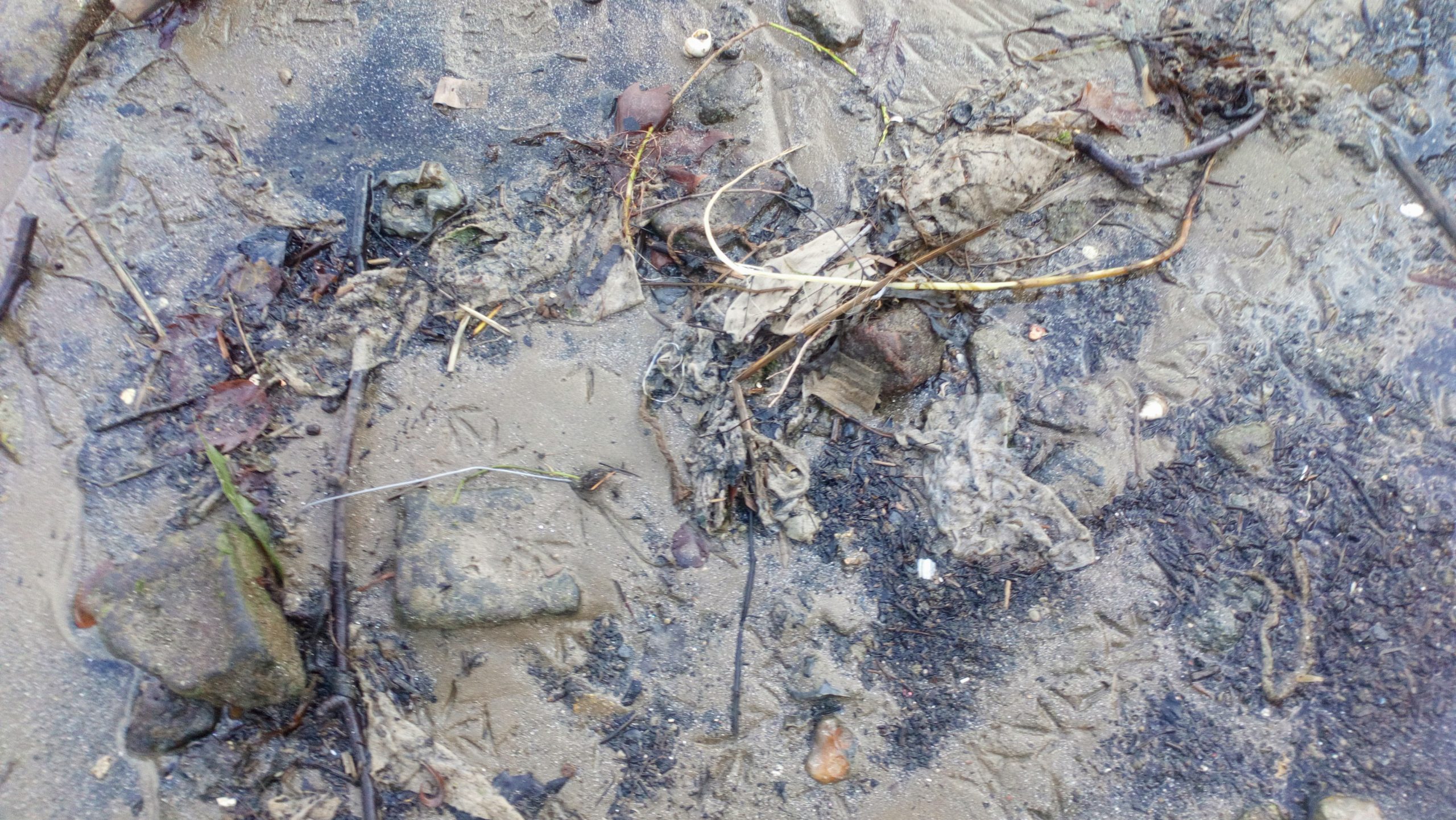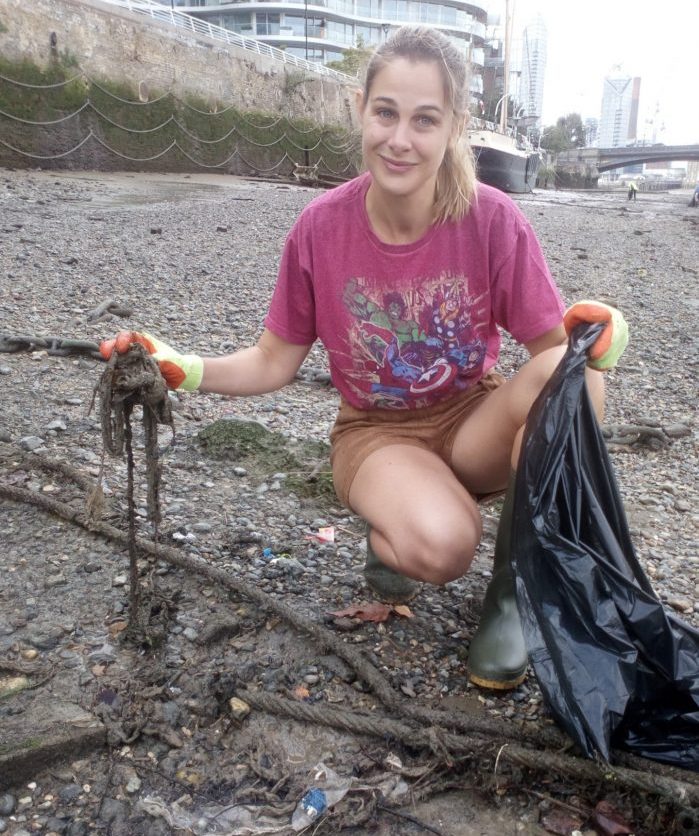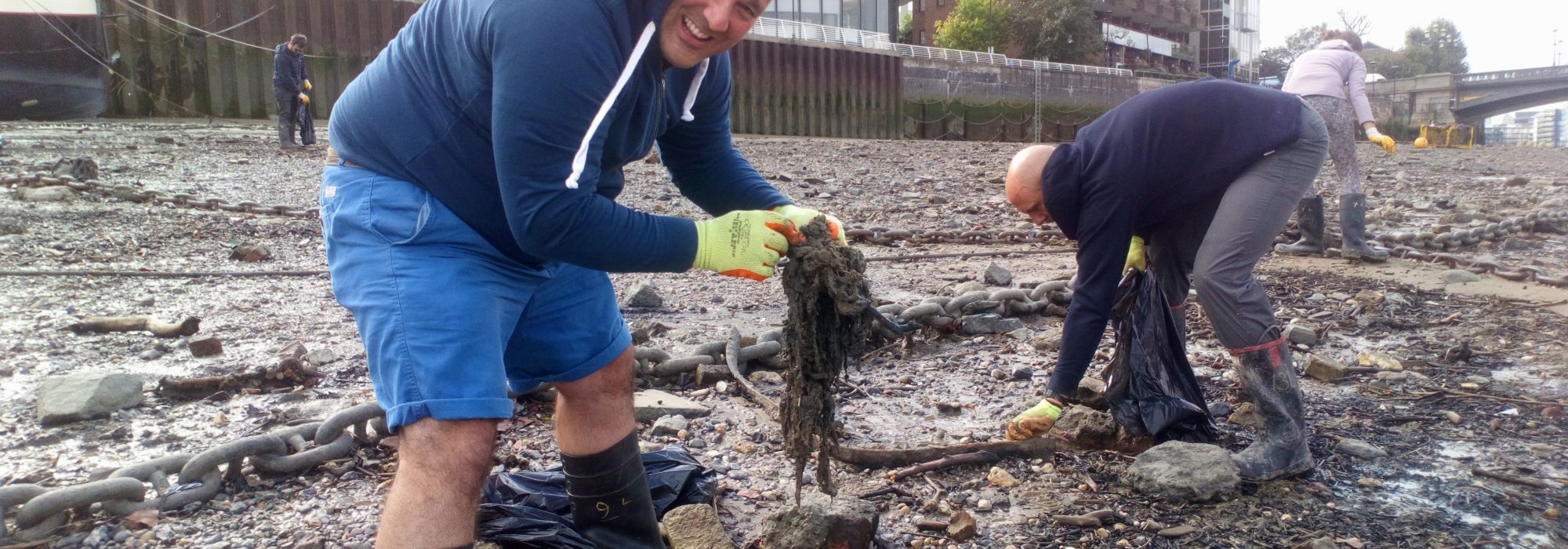Volunteers pick 27,000 wet wipes out of the Thames at Battersea
Date of release: September 24
Environmental charity Thames21 has found 27,400 wet wipes on just one site of the river Thames this week.
Just under 80 volunteer citizen scientists led by the charity carried out the latest in a series of detailed assessments of the extent of the problem at two Big Wet Wipe Counts at Battersea Bridge on Wednesday and Thursday mornings (September 22 and 23).
Thames21 has been documenting the types of plastic litter washed up on foreshores along London’s iconic river over the past six years.
Wet wipes are by far the most common item of litter found within the charity’s Thames River Watch project data. They appear at a handful of hotspots where the water moves slower round the bends, whereas, on most foreshores, light plastic such as food wrappers, bottles and cotton buds are typical finds.
Wipes, most of which contain plastic, bind with natural sediment to create large visible mounds, literally changing the shape of the foreshore. There are also concerns that, as they break down, they create micro-filaments of plastic and are entering the wildlife food chain.
In just under five years, one mound grew by 1.4m in height and covered the area of two tennis courts, data shows.
In four previous events where wet wipes were counted individually, Thames21 volunteers picked out 56,000 wet wipes.
The charity’s efforts to investigate the issue came after first noticing six years ago that mysterious mounds were appearing at sites including Battersea, Hammersmith and Barnes.

At these hotspots, wet wipes are found in densities of between 50 and 200 per square metre. However, recent surveys by Thames21 suggest the issue is more widespread, with other sites apart from known hotspots needing further investigation.
Every time it rains, wet wipes enter the river through sewage overflows, as a consequence of London’s lack of capacity in the sewage system. Wet wipes enter the sewers after being flushed down toilets.
AJ McConville, Thames21’s Thames River Watch project co-ordinator, said: “It’s clear by the size of the mounds and the widespread nature of the wet wipes on the riverbed that this problem is not going away any time soon.
“Most people wouldn’t even notice the problem as they walk along the tow path. However, this is a huge issue badly affecting London’s much treasured river and it needs to be urgently addressed.
“Many wet wipes contain plastic and they shouldn’t be flushed down the toilet. We want people to remember Bin Don’t Flush – only pee, paper and poo should go down the loo.”
 The event was sponsored by Simple, many of whose wipes are either biodegradable – disintegrating within 42 days – or carry labelling on the front instructing customers not to flush them.
The event was sponsored by Simple, many of whose wipes are either biodegradable – disintegrating within 42 days – or carry labelling on the front instructing customers not to flush them.
Magali Giupponi, Global Brand Director on Simple, said: “We are the UK leader in skincare and are committed to being kind not only to skin, but also to the planet. All our bottles are already made of 100% recycled plastic, and most of our wipes are now fully biodegradable and compostable. But still, they should never be disposed of in the loo, but instead composted or disposed of in the regular bin.
“Our commitment at Simple is to make clean and sustainable living easy and accessible for everyone. We are delighted to partner with Thames21 to bring awareness to the issue of plastic waste and wet wipes in our natural ecosystems.”
Would you like to get involved in assessing the types and extent of the litter problem – from wet wipes to plastic bottles and food wrappers?
Londoners can train as citizen scientists with Thames21 to help define the extent of the litter problem by registering to train with the Thames River Watch project, or for more information email thamesriverwatch@thames21.org.uk.
ENDS
Notes for editors
About Thames21
Thames21 connects people with rivers by putting healthy rivers back at the heart of everyday life. We improve and restore rivers, educate and empower the community and campaign for positive change for the good of people and the environment.
About The Thames River Watch programme:
The award-winning Thames River Watch programme, run by Thames21, trains Londoners to collect vital data on the types of plastic washed up on foreshores. Collecting data raises awareness of the issue, informs campaigns and leads to behaviour change, in order to keep litter out of the river and protect it as a space for people to enjoy and for wildlife to thrive.
Wet wipes – a heavy litter type – are the most common litter type found by volunteers in the Thames River Watch programme.
The most common types of light plastic litter (excluding wet wipes) identified by Thames River Watch’s latest statistics on the Tidal Thames are:
- plastic food wrappers: 20%
- cotton bud sticks: 16%
- plastic drinks bottles or lids: 11%
- plastic cups: 4%
In addition:
- Single-use plastic items made up 83% of all counted item
About Simple’s wet wipes
Full information about Simple’s wet wipes can be found on their website.
www.thames21.org.uk | Registered Charity No. 1103997
Media Contact
Ian Lamont
Communications at Thames21
07711 701 696
020 7248 7171
